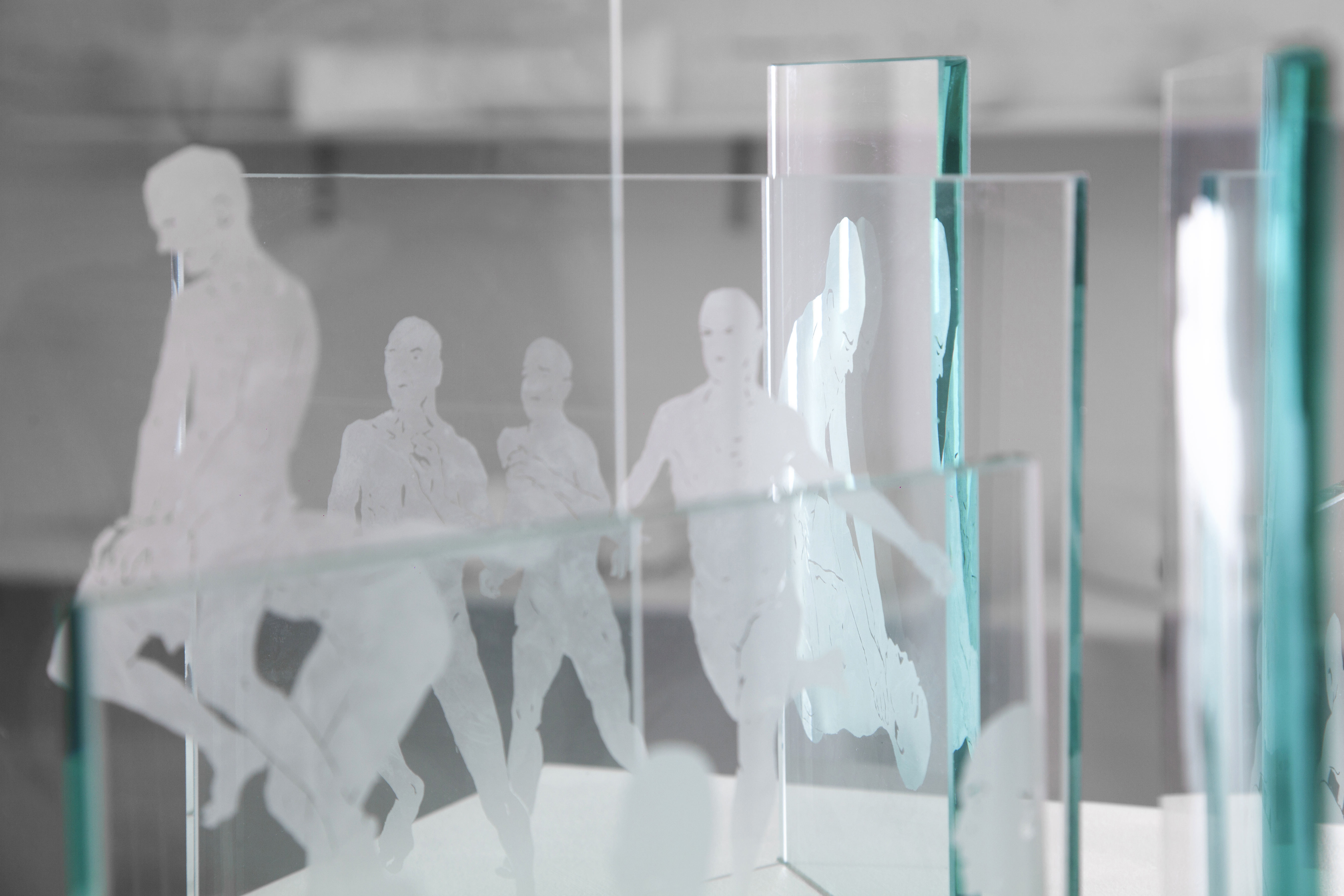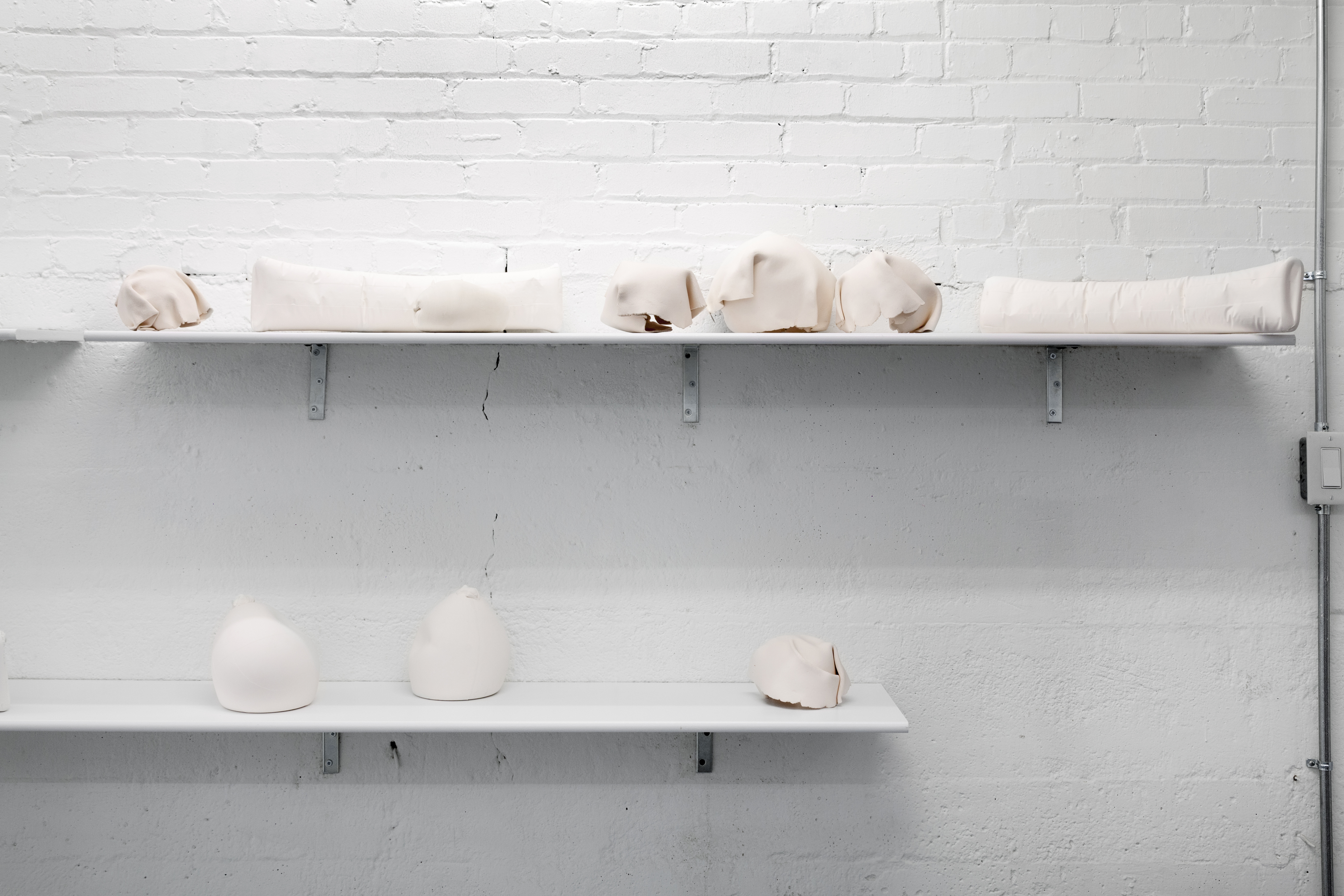Circulations of Intimacy
27 January 2018By John Nyman

For Abbas Akhavan, Sameer Farooq, and Joshua Vettivelu, intimacy describes an oscillation of investments and outpourings, a rhythm of emotional life. Loss, too, plays an important part in Vacancies, their group show at Toronto’s Towards gallery, though it acts less as the lack of a distant ideal than the vehicle for a circulation of affects. Loss, in other words, is the means by which our vulnerabilities—including those of emotion, identity, physicality, and expression—allow us to be moved. By strategically invoking the resilience of art objects, the artists featured in Vacancies help us relive our experiences of these difficult and often transitory feelings in respectful conversation with others’.
Akhavan’s after Untitled (2017) calls to inaugurate this conversation with an empathic remembering of affective selfhood, and the force of his call hits fast and deep. For me, Akhavan’s piece—a thinner-than-paper tissue the size of a queen bed sheet, spread gently on the gallery’s concrete floor—is an invitation to acknowledge the inherent weaknesses of my skin and soul. As a result, it overwhelmed me, at least at first, with surprisingly tactile fantasies: in one moment I imagined bundling the giant sheet against my face; in another, I pictured all of us at the gallery grasping it together, then releasing our various effluvia in a grand gesture of collective vulnerability.

In the real world, however, Akhavan’s work took up a magisterial position that threw my projections into sharp relief. Visitors to the gallery left a cautious distance between their salt-encrusted boots and the work’s subtle boundaries, and many of us were fascinated by the slight signs of wear and tear at its edges. My intimate imaginings were balanced against the object’s insistence on preserving itself as a monument not only to my feelings, but to those of many others’ I could only begin to identify with; by matching my emotional fragility with its own material fragility, it suspended me in an impossible yet vital intercourse. In this way, after Untitled makes the affective sphere a place of sacrifice and exchange, revealing true intimacy in a form of loss that refuses to be consumed.
Vettivelu’s contribution to the exhibition—a circular installation of etched glass panels depicting men in scenes alternatively playful, tranquil, and violent—takes up the physical aesthetic of male intimacy as an entry point into the circulation of affect. In this way, it also gives Vacancies an intersectional punctuation that deepens the show’s overall themes. The work forces the viewer to understand that what the gallery’s description calls “a darker side of masculinity […,] in which men are encouraged to kill off parts of themselves,” is masculinity, and that it is no less relevant to Akhavan’s and Farooq’s efforts than it is to Vettivelu’s explicit figurations of maleness.

At first glance, Vettivelu’s images suggest an explosive outpouring of contradictions: among its most striking panels is a depiction of one man straddling and choking a second, whose O-shaped mouth and splayed hand hover between sexual ecstasy and panic. However, the carefully orchestrated rhythm with which one engages the work transforms it into an experience of contemplation and interiority. As the viewer circles the piece, it becomes localized to a series of points in space, subverting the heroic sprawl of most two-dimensional artworks. As the scenes resolve in sequence, the more forceful among them—six men kneeling with their hands bound, three running aggressively towards the viewer—are tempered by the calmer and more ambiguous—three men eating, a single figure squatting with his naked back arched. Since they are transparent, the panels blend and layer against one another, carving out a multidimensional, refractive inner region that is nonetheless modest and contained. As Vettivelu suggests in the title of their work, there is no difference between nothing and everything when the distance you have built to cope becomes the world (2017), the piece neither celebrates masculinity nor calls for an absolute transformation, but instead presents the paradoxical intensities of male intimacy as an everyday means of coping with life and loss.

Farooq’s Pouf, Sausage, Weight, Arc (2017), a collection of abstract ceramic sculptures arranged loosely across two long shelves, further emphasizes the everyday processes of identity formation masked by official narratives of personhood and value. The sculptures’ forms, which are based on the packaging materials regularly discarded by museums, resemble crumpled sheets of packing paper, sandbags, folds of clothing or flesh, and even body parts. However, Farooq’s pieces ask for much more than to be simply looked at, openly inviting viewers to feel and to feel with their presence and belonging. Here we can recognize that the emergence of complete representations—whether in the form of artworks or human beings—is only possible because others are left behind or positioned in the background. By attending to and repeating the feelings these others evoke, Farooq’s work also maintains a site at which they can be met with mutual respect, holding open the possibility of an affective economy no longer defined by patterns of exclusion.
Although each of the three artists in Vacancies is known for challenging the traditional contexts and presentations of fine art, their works share a common understanding of the nature and purpose of the art object. Aesthetically, for example, the un-ironed folds and creases that make up the dominant texture of Akhavan’s work are softly echoed by the chips and grain of Farooq’s ceramics as well as the rough shimmer of Vettivelu’s etched glass. These subtleties of expression and care only reinforce one of the dominant ideas behind Vacancies: for all of its contributors, the gallery is a space where private feelings circulate through public declarations of resilience, allowing the act of remaining vulnerable to give intimacy a collective form.
Vacancies, a group exhibition featuring the work of Abbas Akhavan, Sameer Farooq, and Joshua Vettivelu, was shown at Toronto’s Towards Gallery from December 7, 2017 to January 6, 2018.
Feature image: Installation view of Vacancies. Image courtesy of Towards Gallery.



